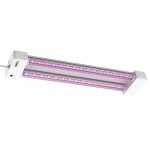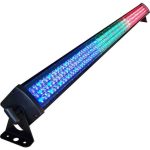LED Light Power Consumption: How Much Electricity Does an LED Light Use?
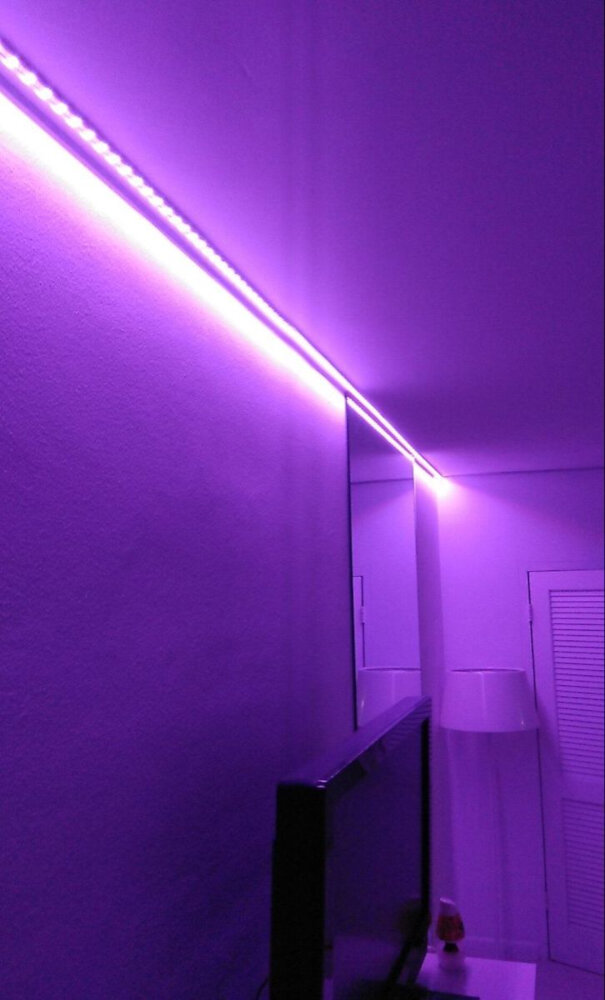
LED lights are becoming increasingly popular due to their energy efficiency and longevity compared to traditional incandescent bulbs. However, many homeowners and businesses are still unsure about the power consumption of LED lights and how much electricity they use. Understanding the power consumption of LED lights can not only help users make informed decisions about their lighting choices but also lead to significant energy savings and lower electricity bills. In general, LED lights use significantly less electricity than incandescent bulbs. According to the US Department of Energy, an LED bulb can use up to 80% less electricity than a traditional bulb, meaning that it can provide the same level of brightness while using significantly less energy. This energy efficiency is due to the way that LED lights work – they convert electricity into light much more efficiently than traditional incandescent bulbs, which produce a lot of heat in addition to light. In this article, we will explore in more detail how much electricity LED lights use and how you can calculate the power consumption of LED lights in your home or business.
LED lights, or Light Emitting Diodes, are an energy-efficient and eco-friendly lighting option that have revolutionized the way we illuminate our homes and workplaces. Unlike traditional incandescent bulbs, LED lights do not rely on a filament to produce light, but instead use a semiconductor material that emits photons when an electric current is passed through it. This makes LED lights much more durable and longer-lasting than traditional bulbs, with a lifespan of up to 50,000 hours. Furthermore, LED lights are highly customizable in terms of color and brightness, and can be used in a variety of settings, from outdoor lighting to home decor. All of these benefits come with the added bonus of low power consumption, making LED lights a cost-effective and sustainable lighting option for anyone looking to save energy and money.
The importance of LED lights in modern lighting technology cannot be overstated. LED lights are highly energy-efficient, using up to 80% less energy than traditional incandescent bulbs. This makes them not only cost-effective but also environmentally friendly. LED lights also have a longer lifespan than traditional bulbs, lasting up to 25 times longer, which means less waste and fewer replacements. Additionally, LED lights are versatile and come in a variety of shapes, sizes, and colors, making them suitable for a wide range of applications, from residential and commercial lighting to automotive and outdoor lighting. Overall, LED lights are a game-changer in the lighting industry, providing a sustainable and efficient lighting solution for the modern world.
The history of LED lights dates back to 1907 when Henry Joseph Round discovered the phenomenon of electroluminescence. However, it wasn’t until the 1960s that practical applications of LED lights were developed. The first commercial LED lights were introduced by Hewlett Packard in 1968, and they were primarily used in electronic displays. Over the years, advancements in technology have led to the development of more efficient and brighter LED lights. Today, LED lights are widely used for various purposes, including lighting in homes, offices, and public spaces. LED lights are known for their energy efficiency, durability, and long lifespan, making them a popular choice for environmentally conscious consumers.
Factors Affecting LED Light Power Consumption
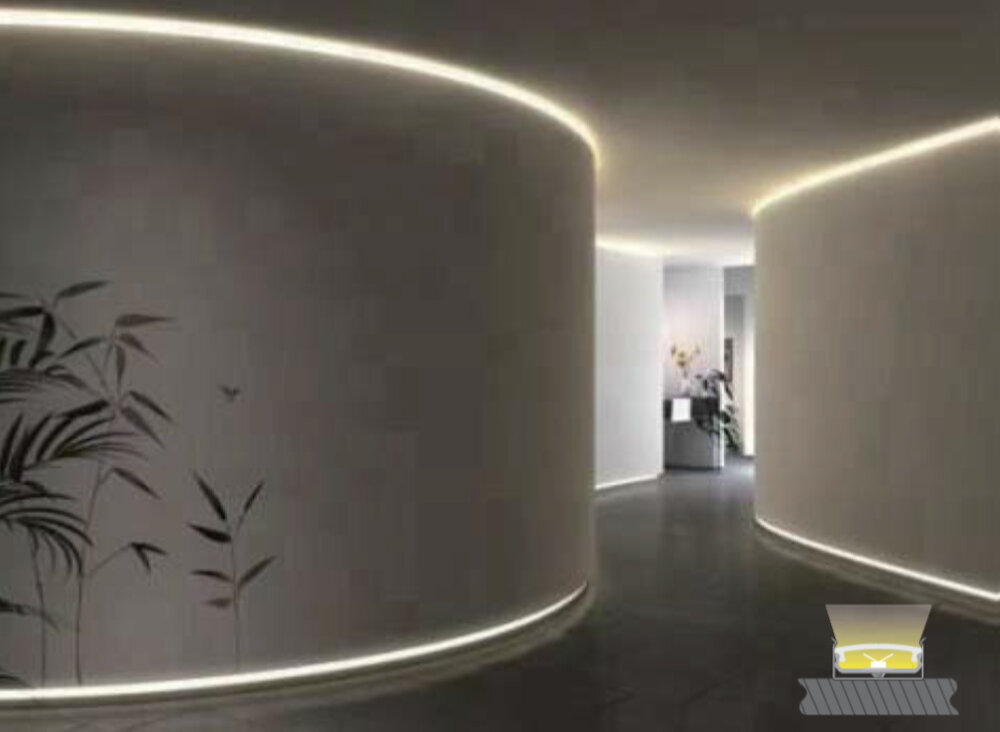
The use of LED lights has become increasingly popular due to their energy efficiency and long lifespan. However, the amount of power consumption of an LED light can vary depending on several factors. One of the most significant factors affecting LED light power consumption is the brightness level. The brighter the LED light, the more energy it will consume. Therefore, it is crucial to choose the appropriate brightness level for the intended use of the LED light. For example, a dimmer LED light will consume less power and be more suitable for a relaxing atmosphere, while a brighter LED light will require more power and be more suitable for task-oriented environments. Another factor affecting LED light power consumption is the color temperature. The color temperature of an LED light can range from warm white to cool white. The warmer the color temperature, the lower the power consumption of the LED light. This is because the warmer color temperature requires less energy to produce than the cooler color temperature. Therefore, it is essential to choose the appropriate color temperature for the intended use of the LED light. For example, a warmer color temperature would be more suitable for a cozy living room, while a cooler color temperature would be more suitable for a workspace. By considering these factors, one can optimize the power consumption of LED lights and ensure that they are using energy efficiently.
The wattage of an LED light determines its power consumption and brightness. LED lights are highly energy-efficient as they use only a fraction of the electricity compared to traditional incandescent bulbs. The wattage of an LED light can range from as low as 1 watt to as high as 100 watts, with the higher wattage bulbs producing brighter light. However, it is important to note that wattage alone does not determine the brightness of an LED light, as other factors such as lumens and color temperature also play a role. Overall, LED lights are a great option for those looking to save on electricity bills while still enjoying bright and efficient lighting.
Lumens output is a crucial factor to consider while evaluating the performance of an LED light. It refers to the amount of visible light produced by the bulb, measured in lumens (lm). The higher the lumen output, the brighter the light will be. The lumens output is a more accurate measure of the light’s brightness than wattage since wattage measures the energy consumed by the bulb, and not the amount of light produced. LED lights are highly efficient and produce more lumens per watt than traditional incandescent bulbs. Therefore, an LED bulb with a lower wattage can produce the same amount of lumens as a higher wattage incandescent bulb, resulting in significant energy savings.
Color temperature is a term used to describe the color appearance of a light source. It is measured in degrees Kelvin (K) and refers to the warmth or coolness of a light. The lower the Kelvin rating, the warmer or more yellow the light will appear. Conversely, the higher the Kelvin rating, the cooler or bluer the light will appear. For instance, a traditional incandescent bulb has a color temperature of around 2700K, which gives off a warm, yellowish glow. On the other hand, LED lights can range from 2700K to 6500K, providing a wide range of options to choose from depending on your preference and lighting needs. It’s important to keep in mind that the color temperature of a light source can affect the mood and ambiance of a space, so it’s essential to choose the right temperature to achieve the desired effect.
Dimming capability refers to the ability of an LED light to adjust its brightness level. LED lights have a distinct advantage over traditional incandescent bulbs in this aspect, as they can be dimmed without consuming excess electricity. This feature is particularly useful in situations where a lower level of lighting is desired, such as in bedrooms, living rooms or dining areas. In addition, LED lights that have dimming capabilities can help to reduce energy costs and extend the lifespan of the bulb. By allowing the user to customize the level of light output, dimming capability provides a versatile and energy-efficient option for home and commercial lighting applications.
The usage duration of an LED light greatly affects its power consumption and overall efficiency. Unlike traditional incandescent bulbs, LED lights can last for tens of thousands of hours, which means that they can be used for years without needing to be replaced. LED lights are also highly energy-efficient, consuming significantly less electricity than incandescent bulbs. This makes them an ideal choice for households and businesses looking to reduce their energy bills and carbon footprint. With their long lifespan and low power consumption, LED lights are an excellent investment that can pay off in both the short and long term.
Voltage fluctuations are variations in the voltage level that is supplied to an electrical system. These fluctuations can be caused by a number of factors, such as fluctuations in the power grid, electrical equipment malfunctions, and changes in the load on the system. Voltage fluctuations can have a negative impact on LED lights, as they require a constant voltage level to operate at their full capacity. If the voltage level fluctuates too much, it can cause the LED lights to flicker or even fail. Therefore, it is important to ensure that the voltage level supplied to LED lights is stable and consistent to avoid any potential problems.
Calculation of LED Light Power Consumption

The calculation of LED light power consumption is an essential aspect of energy-efficient lighting. LED lights are popular due to their eco-friendliness and long-lasting lifespan, but they still require a certain amount of electrical power to operate. The measurement of LED light power consumption is in watts, which determines the amount of electricity needed to power the light. The power consumption of an LED light depends on various factors such as the brightness, size, type, and color temperature. The higher the brightness, the more power an LED light will consume. Similarly, the larger the size, the more power it will require. Calculating the LED light power consumption is relatively simple. Firstly, determine the wattage of the LED light by looking at the manufacturer’s specifications. Secondly, calculate the total number of LED lights you have in your home or office. Finally, multiply the wattage of the LED light by the number of lights to get the total power consumption. For instance, if you have ten 5-watt LED lights, the total power consumption will be 50 watts. By calculating LED light power consumption, you can make informed decisions about energy-efficient lighting and save on electricity bills.
The formula for calculating power consumption is a fundamental concept in electrical engineering that determines how much energy a device utilizes. In the context of LED light power consumption, this formula is particularly useful in determining the amount of electricity needed to power a given LED light bulb. To calculate power consumption, one must multiply the voltage of the device by its current, which yields the wattage of the device. For LED lights, the wattage refers to the amount of electricity needed to power the light source and produce the desired level of illumination. By understanding this formula, consumers can make informed decisions when selecting LED light bulbs that meet their needs while minimizing energy usage and costs.
Calculating the amount of electricity consumed by LED lights can help you estimate your energy bills and make informed decisions about your lighting choices. For instance, a 6-watt LED light bulb used for 4 hours a day will consume approximately 8.76 kilowatt-hours per year, costing around $1.05 per year based on the national average electricity rate. Similarly, a 12-watt LED bulb used for 6 hours a day will consume around 26.28 kilowatt-hours per year, costing approximately $3.15 per year. By comparing various wattages and usage durations, you can determine which LED lights are the most energy-efficient and cost-effective for your needs.
Comparison of LED Light Power Consumption with Other Lighting Technologies
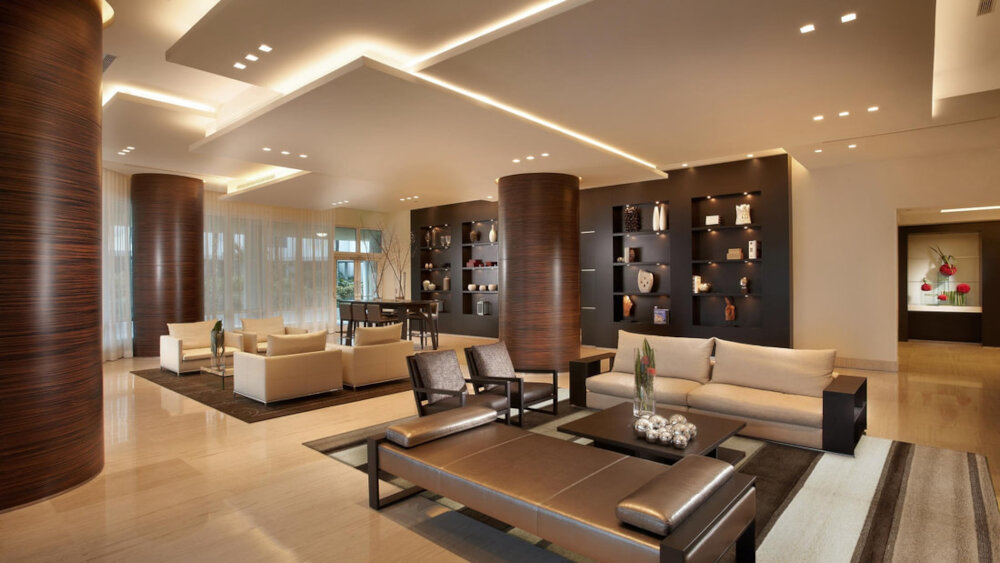
The emergence of LED lighting technology has revolutionized the lighting industry. LED lights have become increasingly popular due to their energy efficiency, durability, and environmentally friendly features. One of the most significant advantages of LED lighting is its low power consumption compared to other lighting technologies. The power consumption of LED lights is significantly lower than incandescent and fluorescent lighting technologies, making them a cost-effective and eco-friendly option for residential, commercial, and industrial use. LED lights consume up to 90% less power than incandescent bulbs, which is a significant amount of energy saved. This is because LED lights use a semiconductor material to convert electricity into light, while incandescent bulbs use a filament that heats up and produces light. As a result, LED lights produce the same amount of light with less energy consumption, making them more efficient and cost-effective. Additionally, LED lights have a longer lifespan than incandescent lights, which means they require less frequent replacements and therefore reduce waste. Overall, LED lighting technology has significantly improved energy efficiency while reducing the environmental impact of lighting usage.
When comparing LED bulbs with incandescent bulbs, the difference in power consumption is significant. LED bulbs are much more energy-efficient and consume significantly less power than incandescent bulbs. In fact, an LED bulb uses up to 80% less electricity than an incandescent bulb of the same brightness. This means that LED bulbs not only use less energy but also have a longer lifespan, making them a better investment in the long run. Additionally, LED bulbs do not generate as much heat as incandescent bulbs, making them safer to use and more environmentally friendly. The technological advancements in LED lighting have made it a more viable and sustainable option for lighting homes and businesses.
When it comes to energy-efficient lighting, compact fluorescent bulbs (CFLs) have been a popular choice for many years. However, in recent years, LED light bulbs have emerged as a more efficient and cost-effective alternative to CFLs. LED bulbs consume less power than CFLs while also providing brighter and more consistent light. Additionally, LED bulbs have a longer lifespan than CFLs, which means they require less frequent replacement and ultimately result in cost savings over time. Though CFLs still offer a more affordable price point, the overall benefits of LED lighting make them a superior choice for those looking to save on energy costs and reduce their environmental impact.
Energy Efficiency Tips for LED Lights
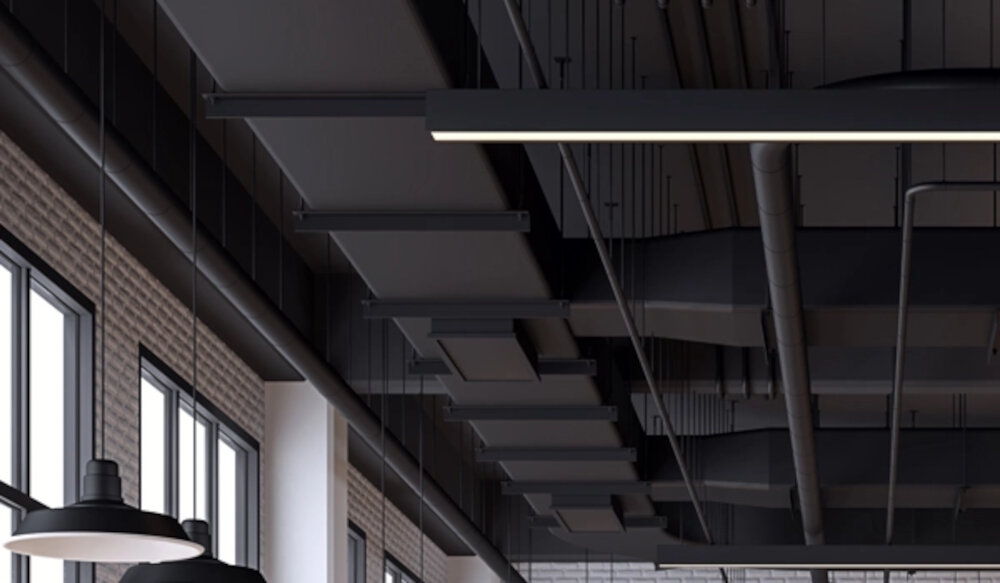
LED lights are one of the most energy-efficient lighting options available. They consume much less electricity than traditional incandescent bulbs and have a much longer lifespan, making them a cost-effective choice for both homes and businesses. However, to get the most out of your LED lights, you need to be aware of some energy efficiency tips. Firstly, it is essential to choose LED lights with the right brightness and color temperature for your needs. Some LED lights are brighter than others, and some have a cooler or warmer color temperature. Choosing the right kind of LED light can help you optimize energy usage and avoid wasting electricity. Another essential energy efficiency tip for LED lights is to ensure that they are installed correctly. LED lights are highly directional, meaning that they emit light in a specific direction. Therefore, it is essential to position them correctly to ensure that they are illuminating the areas that need lighting. Additionally, it is crucial to ensure that your LED lights are in good condition and free of dirt and debris. Dirty or damaged LED lights can consume more electricity than necessary and reduce their lifespan. By following these energy efficiency tips, you can get the most out of your LED lights while minimizing your energy consumption and reducing your carbon footprint.
Proper placement of LED lights is crucial for optimizing their energy efficiency and performance. These lights emit directional light, which means they should be positioned in a way that allows the light to be directed to where it is needed most. When installing LED lights, it is important to consider the purpose of the lighting and the layout of the room or space. For example, task lighting fixtures such as under-cabinet lights should be installed directly above the workspace to provide focused light, while ambient lighting fixtures such as recessed lights should be evenly spaced throughout the room to provide a balanced illumination. Additionally, it is important to avoid placing LED lights near heat sources or in areas with high humidity, as these conditions can affect the lifespan and performance of the lights.
Dimmer switches are a useful addition to any home, allowing you to adjust the brightness of your LED lights according to your needs. Not only do they provide a comfortable ambiance, but they also help to reduce your electricity bill. By lowering the energy consumption of your LED lights, you can save money and reduce your carbon footprint. Dimmer switches work by regulating the amount of electricity that flows to your lights, which in turn affects their brightness. With the ability to adjust the lighting levels in your home, you can create the perfect atmosphere for any occasion, from a romantic dinner to a relaxing evening at home. Overall, the use of dimmer switches is a great way to enhance your home’s lighting system, while also reducing your energy consumption and costs.
One of the most effective ways to reduce power consumption and save money on electricity bills is to turn off LED lights when they are not in use. Although LED lights consume less electricity compared to traditional incandescent bulbs, they still require energy to function. Every watt of electricity saved can make a significant difference in the long run. Turning off LED lights when leaving a room or when natural light is sufficient is a simple yet powerful habit that can help reduce the overall energy consumption of a household or workplace. By doing so, individuals can contribute to a more sustainable and energy-efficient future.
Motion sensors are an innovative technology that has revolutionized the way we use lighting. These sensors can detect motion and activate the LED lights, which means that the lights only turn on when needed. This not only saves energy but also increases the lifespan of the LED bulbs. Motion sensors are commonly used in outdoor lighting, security lighting, and indoor lighting applications. They provide a convenient and efficient way to control lighting, reducing energy consumption, and ultimately saving money. By using motion sensors, we can reduce our carbon footprint and contribute to a more sustainable future.
Regular maintenance is an essential aspect of keeping LED lights efficient and reducing their power consumption. It is crucial to keep the fixtures clean and free of dust, as it can accumulate on the surface and reduce the light output. Additionally, checking the wiring and connections periodically can help identify any potential issues that may cause fluctuations in energy consumption. Replacing faulty components, such as drivers or capacitors, can also help keep the LED lights running at optimal levels, reducing energy waste and unnecessary costs. By implementing regular maintenance practices, LED lights can not only save on electricity bills but also extend their lifespan, making them a sustainable and cost-effective lighting solution over the long term.
LED lights are an energy-efficient lighting option that consumes significantly less electricity compared to traditional incandescent bulbs. The power consumption of an LED light depends on its wattage and the number of hours it is used. On average, a 10-watt LED light used for 6 hours per day will consume approximately 18 kWh per year, resulting in a cost of around $2.16. This is significantly lower than the cost of an incandescent bulb, which consumes around 60 watts and costs around $7.20 per year when used for the same amount of time. Therefore, switching to LED lights can not only save energy but also save money on your electricity bill.
LED lights have revolutionized the lighting industry with their energy efficiency and cost-saving benefits. Unlike traditional incandescent bulbs, LED lights consume a significantly lower amount of electricity, resulting in reduced energy bills. LED lights are also known for their long lifespan, which means that they require less frequent replacement, reducing the need for maintenance and replacement costs. Additionally, LED lights have a higher luminous efficacy, which means they produce more light per watt of electricity, making them a more efficient and effective lighting solution. Overall, the use of LED lights not only helps to save on electricity costs but also contributes to a greener and more sustainable environment.
When it comes to choosing lighting technology, making informed decisions is crucial. It can have a significant impact on energy consumption, cost, and the environment. LED lights have become increasingly popular due to their energy efficiency and long lifespan, but it’s essential to consider other factors such as color temperature, brightness, and compatibility with existing fixtures. By taking the time to research and compare different lighting options, you can make a well-informed decision that not only saves you money but also reduces your carbon footprint. Additionally, understanding the power consumption of LED lights can help you determine how many lights you need and how much energy they will consume, which is especially important for large-scale lighting projects. Overall, making informed decisions when selecting lighting technology is crucial for achieving optimal lighting quality, energy efficiency, and cost-effectiveness.
Conclusion
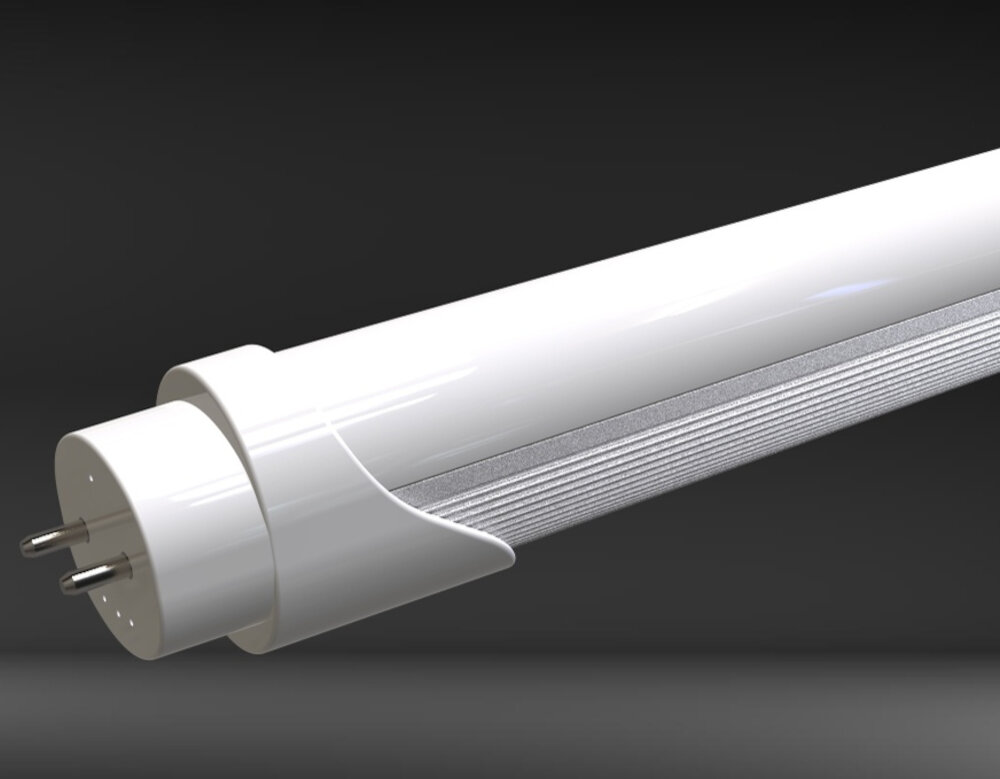
In conclusion, LED lights are a highly energy-efficient lighting solution that offer a number of benefits over traditional incandescent bulbs. They consume significantly less electricity and have a longer lifespan, making them a cost-effective option for both residential and commercial lighting needs. With the increasing demand for sustainability and eco-friendliness, LED lights have become a popular choice for consumers looking to reduce their energy consumption and carbon footprint. It is important to note, however, that the actual power consumption of an LED light will depend on a number of factors, including the wattage, brightness, and usage time. Nevertheless, LED lights remain an excellent choice for those looking to save money and reduce their impact on the environment.

